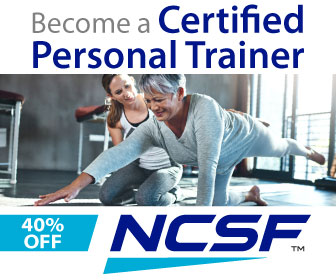Become a Personal Trainer
Becoming a personal trainer can offer numerous possibilities and advantages for individuals passionate about fitness, health, and helping others achieve their wellness goals.
Here are some potential benefits and opportunities associated with pursuing a career as a personal trainer:
1. Helping Others Achieve Fitness Goals
Impact Lives - Personal trainers have the opportunity to positively impact the lives of their clients by assisting them in achieving their fitness and health objectives.
2. Flexibility and Autonomy
Flexible Schedule - Many personal trainers have the flexibility to set their own schedules, making it an attractive option for those who value work-life balance.
3. Passion for Fitness
Combine Passion with Profession - If you are passionate about fitness, becoming a personal trainer allows you to turn your love for exercise and health into a fulfilling career.
4. Diverse Work Environments
Gym, Studio, or Freelance - Personal trainers can work in various settings, including gyms, fitness studios, health clubs, or as freelancers, offering a range of options to suit individual preferences.
5. Continuous Learning
Stay Updated - Fitness is a dynamic field with evolving trends and research. Personal trainers have the opportunity for continuous learning, staying updated on the latest fitness techniques, nutrition, and health information.
6. Building Relationships
Client Relationships - Personal trainers often develop strong relationships with their clients, offering support not only in fitness but also in aspects of overall well-being.
7. Financial Potential
Income Potential - Depending on factors such as experience, specialization, and client base, personal trainers can have the potential to earn a competitive income.
8. Specialization Opportunities
Specialize in Niche Areas - Personal trainers can choose to specialize in specific areas, such as weight loss, athletic training, rehabilitation, or working with specific populations like seniors or individuals with chronic conditions.
9. Health and Wellness Industry Growth
Growing Demand - As awareness of the importance of health and wellness increases, there is a growing demand for qualified fitness professionals, creating job opportunities for personal trainers.
10. Job Satisfaction
See Results - Witnessing the positive changes in clients' lives, both physically and mentally, can provide a high level of job satisfaction.
11. Educational Opportunities
Further Education - Personal trainers can pursue additional certifications and education to expand their knowledge and skills, potentially leading to career advancement.
12. Community Impact
Community Building - Personal trainers can contribute to building a sense of community within fitness facilities or among their clients, fostering a supportive environment.
While there are many advantages to becoming a personal trainer, it's important to note that success in this field often requires dedication, ongoing education, and strong communication skills. Additionally, obtaining a reputable certification from a recognized organization is crucial to establishing credibility in the industry.
Becoming a certified personal trainer is a fantastic step towards contributing to a healthier community. Here's a guide to help you get started:
1. Educational Requirements
Research Certification Programs - Look for reputable certification programs accredited by recognized fitness organizations.
The National Council on Strength and Fitness (NCSF) is an international member-driven organization of exercise professionals headquartered in Coral Gables, FL. The NCSF board for certification oversees the National Commission for Certifying Agencies (NCCA) accredited credentialing programs and advocates on behalf of exercise professionals around the world.
Choose a Specialty - Consider if you want to specialize in a particular area such as strength training, weight loss, sports performance, or working with specific populations like seniors or individuals with medical conditions.
2. Certification Process
Complete Required Courses - Enroll in the certification program of your choice and complete the necessary coursework. This may include anatomy, exercise physiology, nutrition, and program design.
Prepare for the Exam - Most certifications require passing a written exam. Prepare thoroughly by studying the provided materials and taking practice exams.
Attend Workshops and Seminars - Some certifications offer workshops and seminars to enhance practical skills. Attend these events for hands-on experience.
3. Gain Practical Experience
Internship or Practical Hours - Many certification programs require practical experience. Seek internships or gain practical hours under the supervision of experienced trainers.
Volunteer - Offer your services to friends, family, or community members to gain real-world experience and build your confidence.
4. CPR/AED Certification
Get CPR/AED Certified - Many fitness facilities require personal trainers to have current CPR (Cardiopulmonary Resuscitation) and AED (Automated External Defibrillator) certifications. Obtain these certifications from accredited organizations.
5. Build a Professional Network
Connect with Other Trainers - Attend fitness events, workshops, and networking sessions to connect with other fitness professionals. Building a network can provide support, mentorship, and potential job opportunities.
6. Legal Considerations
Liability Insurance - Consider obtaining liability insurance to protect yourself in case of accidents or injuries during training sessions.
Business Registration - If you plan to operate as an independent trainer or start your fitness business, familiarize yourself with local business registration requirements.
7. Create a Business Plan
Identify Your Niche - Define your target market and the specific services you want to offer.
Set Prices - Determine your pricing structure based on your expertise, market demand, and local competition.
Marketing Strategies - Develop a marketing plan to promote your services. This can include creating a website, using social media, and collaborating with local businesses.
8. Continued Education
Stay Updated - The fitness industry evolves, so continue your education to stay updated on the latest trends, research, and techniques.
9. Community Engagement
Offer Workshops or Classes - Engage with the community by offering workshops or fitness classes. This can help you connect with potential clients and contribute to community health.
Collaborate with Local Businesses - Partner with local gyms, health food stores, or wellness centers to expand your reach.
10. Provide a Positive Environment
Create a Supportive Atmosphere - Foster a positive and supportive training environment for your clients. Motivate and encourage them throughout their fitness journey.
Remember, success as a personal trainer goes beyond certifications; building strong relationships, continuously learning, and genuinely caring about your clients are key elements for long-term success in this rewarding profession.



